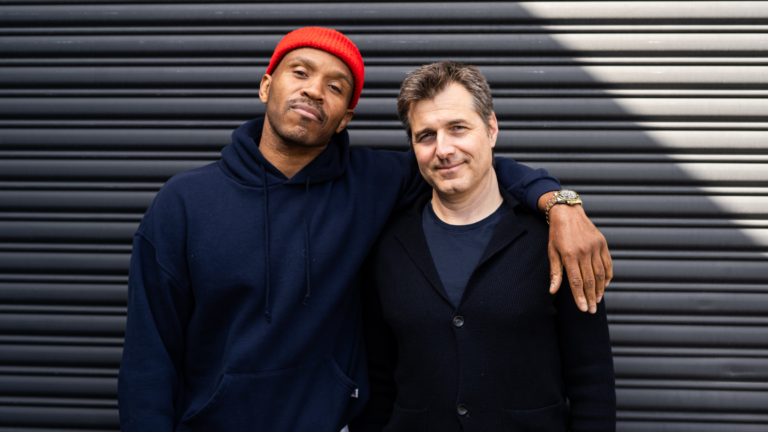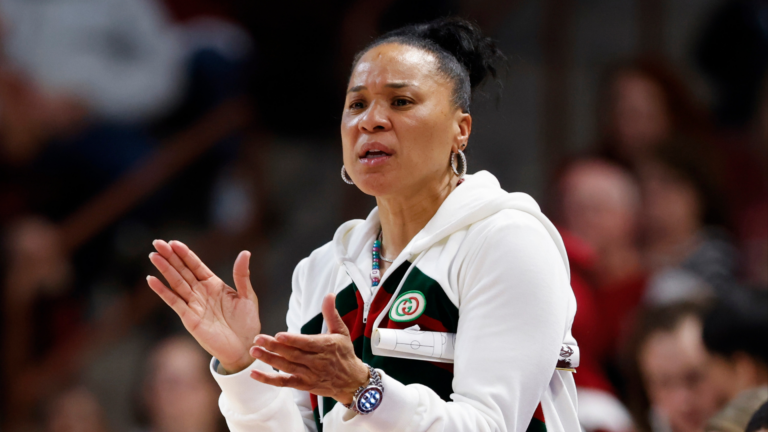This week’s conversation is with Lindsay-Rae McIntyre, the Corporate Vice President and Chief Diversity Officer at Microsoft.
From thought leadership, to operational execution, to employee engagement, Lindsay leads Microsoft’s strategic efforts on systemic solutions to advance diversity and inclusion guided by a commitment to be mission-driven, outcome-oriented, globally-informed, science-based, and culturally-competent.
She spearheaded the publication of Microsoft’s first Diversity & Inclusion Report and shaped the company’s recent action-oriented response to racial injustice.
Under her leadership, her global team of human resources and employee engagement strategists are driving the adoption of Microsoft’s Core Priority for Diversity & Inclusion, introducing new solutions to advance inclusive behaviors and habits including Microsoft’s Allyship Program and employee self-identification, and helping leaders embrace their inclusion learning journey.
You may have already heard a snippet of our conversation as part of the Decoding Disruptors: Race Forward special episode we published about a month ago but I wanted to release the full conversation here because there is so much more we touch on.
And if you haven’t had a chance to listen to Race Forward yet, I would be honored if you would give it a listen.
You can learn more about it and explore video clips of it at decodingdisruptors.com/race
“Part of my responsibility is to create the platform for other voices to be heard and to invite people into the work who don’t necessarily see themselves as a part of the work. And so there’s never any scenario where I think as a white chief diversity officer, I speak on behalf of lived experience that I don’t have.
In This Episode:
What was early life like?
There was a lot of me being connected to all that I didn’t know. And so the deep curiosity to learn about different cultures and communities and identities, was something that I was connected to very young and have continued to nurture and respect as I’ve gotten older.
What were her emotions when the social unrest erupted in the United States this year?
I go to that place of curiosity on what is it about this particular moment in time? What is it about the questions that we are asking about broader society and our circumstances in the context of COVID and a number of other dynamics that are going on in our lives, that are bringing this conversation to a greater number of people than may have engaged in it before. And so, if from that place of curiosity started to think about what could be possible in the awareness of helping people understand and build empathy for experiences different from their own and different from those that they were connected to. And then, just really feeling a sense of responsibility as somebody who is a practitioner of the work, who works for a company that is deeply connected to and committed to this work on like, okay, how am I going to use my own platform to raise the voices of others and to create systemic change that will result in an outcome that is different than the one that came before us?
What are the overarching goals of diversity at Microsoft?
I think at its core, diversity is really about making sure that we have the variety of backgrounds, identities, geographies, and perspectives that at least for Microsoft allow us to step up to this hugely audacious goal we have to empower every person and every organization on the planet because that’s like seven billion people. And so every day we aspire to make sure that not only are we building products and services and solutions for the seven billion, but that we understand well, empathy and proximity are really important. They are not a proxy for representation.
How does she define diversity and inclusion?
Diversity is about having as many diverse identities, perspectives, communities represented inside Microsoft as the marketplace and the communities that we serve externally. And then inclusion is what it feels like. Inclusion is, how well we take advantage of all of those diverse perspectives and create the conditions for them to be seen and heard and come through in all that we are building and providing.
A business case and human case for inclusion
The neuroscience tells us that exclusion resonates in the brain, the very same way as physical pain, you think like, wow, it ought to be no surprise that when people are excluded, they are more defensive, they’re less collaborative, they don’t connect with others as well. And they, for sure don’t do their best work. And that takes us to productivity. It takes us to authenticity. It takes us to everything that we’re not getting from this hugely incredible resource that we have inside our organizations. And so, there absolutely is a business case to be explained, but there’s also the human case that is different than it’s the right thing to do, because it’s also about how do you, we spend so much time and money and effort reaching to and acquiring incredible talent. If we don’t create the conditions for them to have an amazing employee experience, they’re going to go somewhere else. And that is incredibly costly.
What about the charged concept of “privilege”?
I think that when given the opportunity to allow people to understand the work and the way in which it’s being unfolded at Microsoft gives these words less charge. Privilege has been a swear word in the diversity and inclusion space forever. And yet we’re starting to talk about it now in a material way. And at Microsoft, we are talking about privilege, not as a binary thing, you have it, or you don’t. But that each one of us, depending on situations or circumstances, you may have privilege. And, if you are on payroll at Microsoft, regardless of your background, that all by itself has privilege. And so by being able to layer it and create texture and context for privilege, again, it becomes a little less scary. People who have multiple identities and intersectionality being able to understand, where privilege does or doesn’t show up for them.
Her responsibility
Part of my responsibility is to create the platform for other voices to be heard and to invite people into the work who don’t necessarily see themselves as a part of the work. And so there’s never any scenario where I think as a white chief diversity officer, I speak on behalf of lived experience that I don’t have. I absolutely do not. But I hope by creating systemic solutions and systemic interventions, the expertise and knowledge that I do have will allow less bias to unfold, will allow greater accountability in the processes that are less dependent on the individual well-intended humans who might have them at any point in time.
What are the biggest challenges that people of color face in workplaces that are predominantly white?
I think that there is a propensity to go to this place of like, oh, I don’t see color, we’re all the same, without understanding that while some might find that to be well-intended as they speak those words, the communities of marginalized backgrounds experience those words as, then you don’t see me, then you don’t understand me. And it starts there. So how is it that we can create conversations and education and conversation that will allow people to customize the work experience for the totality of the humans that are in the workplace. But the call to action now is customization and understanding somebody’s wants and needs and aspirations in a way that allow you to help shape. That mentoring isn’t just mentoring, sponsorship isn’t just sponsorship. There’s a way for us to do this in a thoughtful, meaningful way that recognize we do all come from different experiences and backgrounds.
How does she help others be aware of the internal psychological skills, be better listeners, be better advocates or allies for others?
The D and I space is often full of threat and discomfort. And like, why would I do that? From a neuroscience standpoint, like we’re inviting people into all the things that scare them and make them uncomfortable. And yet for me, I say, first and foremost, I want you to start to say out loud what you’re feeling. So even I go into conversations that are really charged and I say, “I just want to say out loud that this is a supercharged conversation, and I respect you as a colleague. And I know that when we come out the other side of this conversation, we both will have learned something.” Because sometimes saying it out loud can let a little bit of the pressure. Or being able to just help it.
How leadership is evolving
Leaders were so used to performing, to having the right answer, to being revered for the perfectionism of our craft and the strength of our leadership. For so many of us, we don’t have a lived experience that gives us any credibility when it comes to diversity and inclusion. And so the strength is in the vulnerability of not knowing. And the credibility comes from an intentional sustained, willingness to invest in self-awareness, and then to do something about it, because people don’t confuse inspiration with execution in this space. You have to do both. And one without the other is not what we’re asking folks to do. And so now the vulnerability piece of the work, and also the intentionality with which we get curious about identities that are different from ours, and begin to think about our own opportunity and accountability to remove systemic and structural bias from the organizations, the processes, the rhythms that we have in our decision-making wheelhouse every single day.
How can company leaders accelerate the push towards racial equality in our modern workplaces?
First, a self-awareness investment effort – it starts with self before we opine on others around us. Second would be to make sure that the words in the music match always, in the decisions that you make, be aware of where diversity and inclusion is present in the decisions that you don’t make.Who you hire, who you don’t hire, who you mentor, who mentors you, who gets the big projects, everybody’s watching. And so as a leader, the words and the music have to match. And then the third would be to get more comfortable with these things that are uncomfortable, because, uncomfort all by itself is a skill set. And the more practice we have to feel it, to try, to fail and to pick ourselves up and try it again, the more people will watch us and be willing to join.
How does she think about Fear of Other People’s Opinions (FOPO)?
I think that it has a ton of merit and it depends on the circumstances. So I will tell you as a child who didn’t come from much, my overarching philosophy through my entire life has been why not? Because the worst possible scenario I could come up with was that I would end up back with a family that deeply love and accept me for who I am, regardless of my degrees or the stamps in my passport or my professional achievements. And that’s not the case for everybody. So I think we have to accept and understand that there are people’s opinions of us that make or break our ability to move forward, to pay mortgages, to look after our families. And those are real. And so I think just having respect for it and then being willing to create conversation and awareness, because even opinions can be fraught with microaggressions all by themselves.


